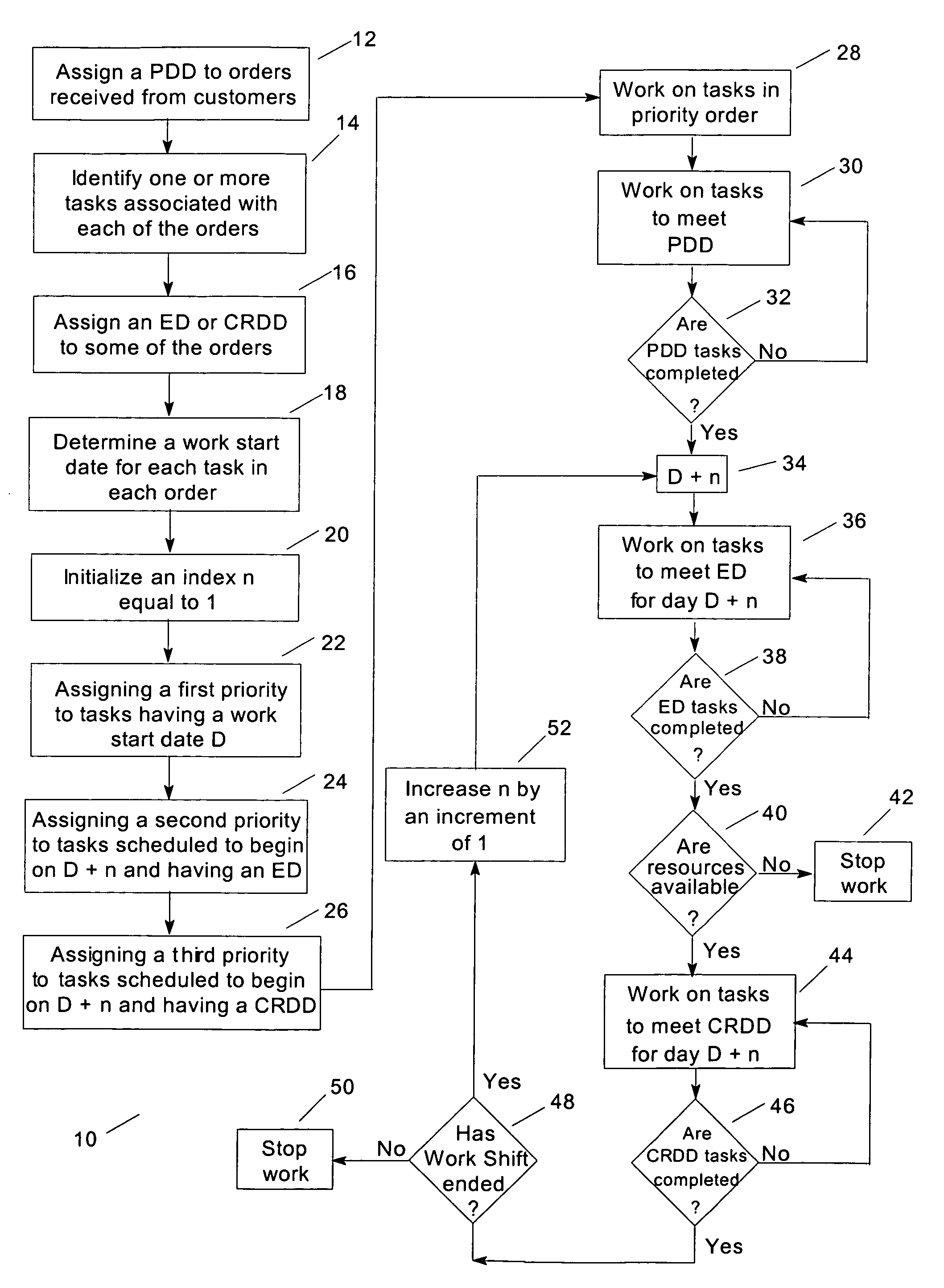Work when ready load balancing using critical dates
a critical date and work load technology, applied in the field of scheduling work loads, can solve the problems of invariably inefficient scheduling, increased costs, and unused work force and material assets
- Summary
- Abstract
- Description
- Claims
- Application Information
AI Technical Summary
Benefits of technology
Problems solved by technology
Method used
Image
Examples
Embodiment Construction
[0012]The present invention provides work load distribution for performing a complex sequence of tasks to complete an order for providing to a customer either a service or a product. In a preferred embodiment, the method is used in service assembly factories, for example provisioning a circuit in a telecommunications network. The resources needed can include work force and material assets and can vary for each order.
[0013]A service assembly factory is a sequence of many functions required to deliver a service to a customer. The final product can be access to a service such as frame relay or internet protocol (IP) and not physical goods. Assembling such a service requires connectivity of circuits and ports through a telecom company and its partner networks like the local exchange carriers (LECs). The telecom company as well as its partners have to coordinate and perform numerous tasks to deliver such a service on time. Because of the complexity of the service being assembled, the ass...
PUM
 Login to View More
Login to View More Abstract
Description
Claims
Application Information
 Login to View More
Login to View More - R&D
- Intellectual Property
- Life Sciences
- Materials
- Tech Scout
- Unparalleled Data Quality
- Higher Quality Content
- 60% Fewer Hallucinations
Browse by: Latest US Patents, China's latest patents, Technical Efficacy Thesaurus, Application Domain, Technology Topic, Popular Technical Reports.
© 2025 PatSnap. All rights reserved.Legal|Privacy policy|Modern Slavery Act Transparency Statement|Sitemap|About US| Contact US: help@patsnap.com


